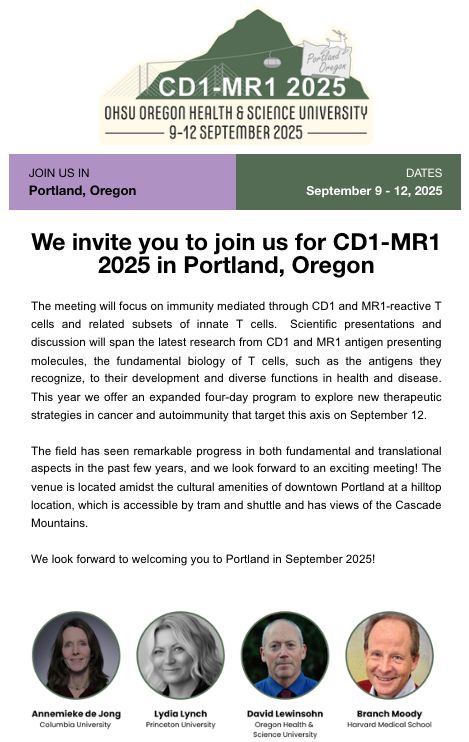
aims at understanding #MAIT cell biology in #tissueimmunity and #cancer
passionate about #immunometabolism
based at M3 Research Center at University of Tübingen
Stay tuned for more.
#NobelPrize

Stay tuned for more.
#NobelPrize
⬇️ Here's a thread about:
🧬 Immunometabolic dysfunction of MAIT cells in MASLD: A novel barrier to liver cancer immunity 🧬
(led by Sebastian Deschler)

⬇️ Here's a thread about:
🧬 Immunometabolic dysfunction of MAIT cells in MASLD: A novel barrier to liver cancer immunity 🧬
(led by Sebastian Deschler)
jobs.medizin.uni-tuebingen.de/Job/6357/PhD...
jobs.medizin.uni-tuebingen.de/Job/6357/PhD...

My lab is moving to the M3 Research Center at the University of Tübingen and is looking for PhD students who are enthusiastic about translational research.
If you are, read on below ⬇️
My lab is moving to the M3 Research Center at the University of Tübingen and is looking for PhD students who are enthusiastic about translational research.
If you are, read on below ⬇️
Today, we celebrate brilliant women pushing boundaries and driving scientific innovation.
Stay tuned for inspiring stories that celebrate passion, perseverance, and progress. 🚀
#yefis #WomenInScience #immunology

www.pnas.org/doi/10.1073/...
www.pnas.org/doi/10.1073/...
Then I *THOROUGHLY RECOMMEND* @mainilab.bsky.social
Incredibly supportive PI & environment
Cutting-edge science🧪 (dissecting hepatic #immunity in people w/ #hepatitisB & #cancer)
Fab team & collabs
Great institute
APPLY NOW: www.linkedin.com/jobs/view/re...
Then I *THOROUGHLY RECOMMEND* @mainilab.bsky.social
Incredibly supportive PI & environment
Cutting-edge science🧪 (dissecting hepatic #immunity in people w/ #hepatitisB & #cancer)
Fab team & collabs
Great institute
APPLY NOW: www.linkedin.com/jobs/view/re...
www.uni-heidelberg.de/de/newsroom/...


Updates are on the website www.cd1mr1.com including Program at a Glance, Location and Venue details.

Updates are on the website www.cd1mr1.com including Program at a Glance, Location and Venue details.
A starter pack of those working on our favourite cell … the T cell 🥰🙈🥰
If you want an add let us know
go.bsky.app/8B5P25c
A starter pack of those working on our favourite cell … the T cell 🥰🙈🥰
If you want an add let us know
go.bsky.app/8B5P25c


